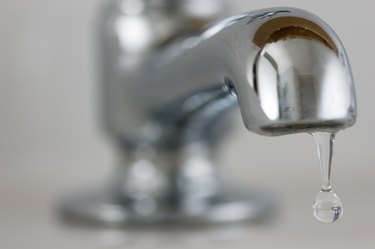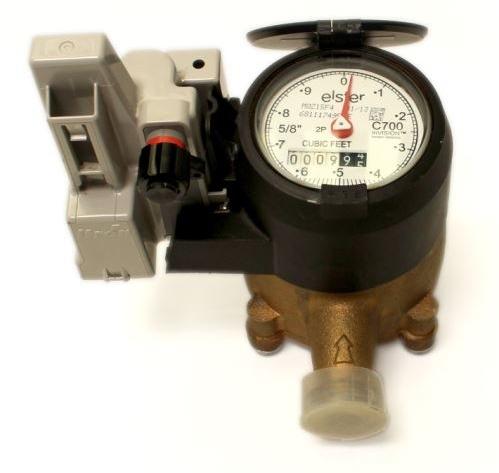Your Advice to Rectifying Low Water Pressure in Your Home
Your Advice to Rectifying Low Water Pressure in Your Home
Blog Article
What're your concepts about 9 Reasons for Low Water Pressure in Your House?

Low tide pressure in your home can be a discouraging problem, impacting every little thing from bathing to cleaning meals. If you're experiencing weak water flow, there are several feasible reasons and services to explore. In this guide, we'll talk about typical factors for low water pressure and practical actions to attend to the issue efficiently.
Intro to Low Tide Stress
Low tide pressure occurs when the flow of water from your faucets, showers, and other components is weak than usual. This can make day-to-day jobs a lot more challenging and less effective. Understanding the sources of low water stress is crucial to discovering the ideal solution.
Common Root Causes Of Low Water Stress
Pipeline Obstructions
Over time, pipelines can come to be blocked with mineral deposits, sediment, or particles, restricting the flow of water. This is a common issue in older homes with galvanized steel pipes.
Rust
Deterioration within pipelines can bring about leakages and reduced water stress. Corrosion buildup can restrict water flow, specifically in aging plumbing systems.
Faulty Pressure Regulators
Pressure regulators are accountable for preserving regular water stress in your house. If they malfunction, it can result in low tide pressure or uneven flow throughout your home.
Municipal Water Issues
Occasionally, the problem exists outside your home. Municipal water system problems, such as main line leakages or upkeep job, can momentarily reduce water pressure in your location.
How to Diagnose Low Tide Stress
Examining Faucets and Fixtures
Start by testing the water stress at different faucets and components throughout your home. If the problem is separated to certain locations, it might suggest local problems.
Evaluating Pipelines
Check noticeable pipelines for signs of leaks, corrosion, or clogs. Take note of any kind of uncommon audios, such as knocking or rattling pipelines, which can show issues within the plumbing system.
Consulting with a Plumber
If you're unable to determine the source of low water pressure, consider employing an expert plumber to conduct an extensive inspection. They can recognize underlying problems and recommend suitable services.
Do It Yourself Solutions to Take Care Of Low Water Stress
Cleaning Aerators and Showerheads
Natural resources can gather in aerators and showerheads, minimizing water flow. Get rid of and clean these parts regularly to enhance water pressure.
Flushing Hot Water Heater
Debris accumulation in the water heater can limit flow and decrease efficiency. Purging the tank periodically assists get rid of debris and maintain ideal efficiency.
Inspecting Stress Regulatory Authority
Ensure that the stress regulatory authority is working correctly. Changing or changing the regulator can help recover appropriate water pressure throughout your home.
Clearing Up Clogs in Water Lines
For minor obstructions, try making use of a plumbing snake or chemical drain cleaner to clear blockages in pipelines. Be cautious when utilizing chemicals and adhere to security standards.
When to Call a Professional Plumber
If do it yourself efforts fail to settle the concern or if you believe significant plumbing troubles, it's best to look for aid from a qualified plumber. They have the expertise and tools to attend to intricate concerns securely and properly.
Safety Nets to Maintain Water Pressure
Routine Upkeep
Schedule routine maintenance for your plumbing system to prevent problems such as rust, leaks, and clogs. Resolving minor issues early can assist avoid more significant fixings in the future.
Setting Up a Stress Booster
Take into consideration mounting a pressure booster pump to boost water pressure in areas with consistently low flow. This can be particularly helpful for multi-story homes or properties with high-demand fixtures.
Tracking Water Use
Be mindful of water use routines and avoid overtaxing the plumbing system. Basic adjustments, such as shocking showers and washing loads, can assist preserve adequate water pressure.
Final thought
Dealing with low tide stress can be frustrating, however determining the underlying causes and applying ideal solutions can bring back optimal circulation throughout your home. Whether it's cleaning aerators, evaluating pipes, or speaking with a plumber, taking proactive actions can make sure a steady supply of water for your everyday requirements.
FOUR WAYS TO FIX LOW WATER PRESSURE NOW
Turning on a shower or faucet only to find the water comes out in a sad, slow drizzle is never a good feeling. How exactly are you supposed to wash a pan or take a quick shower when it takes 10 minutes just to rinse off a little soap? The good news is that when your water pressure is bad, there's always a cause: typically one that can be easily fixed. Here are some of the most common causes of low pressure and what you can do to fix the issue:
DEBRIS AND MINERAL DEPOSIT BUILDUPS
If you notice low water pressure from just one or two of the fixtures in your house, the problem likely has to do with debris buildup. Water is full of minerals and other debris, all of which can accumulate in your pipes and on your fixtures. This can cause a blockage that affects how much water flows through. To fix this, try filling a small plastic bag with white vinegar, and use a rubber band to hang it around your showerhead or faucet. Let the head of the fixture soak for a few hours, and the vinegar should loosen the deposits.
WATER LEAKS
Leaks are another common cause of low water pressure. If water is flowing out of your plumbing through a hole or crack before it can reach your fixture, the pressure coming out of the faucet or showerhead will be lower. A plumbing professional is your best bet for finding and repairing a leak in your water supply pipes.
Leaks are another common cause of low water pressure. If water is flowing out of your plumbing through a hole or crack before it can reach your fixture, the pressure coming out of the faucet or showerhead will be lower. A plumbing professional is your best bet for finding and repairing a leak in your water supply pipes.
FOUR WAYS TO FIX LOW WATER PRESSURE NOW
Turning on a shower or faucet only to find the water comes out in a sad, slow drizzle is never a good feeling. How exactly are you supposed to wash a pan or take a quick shower when it takes 10 minutes just to rinse off a little soap? The good news is that when your water pressure is bad, there's always a cause: typically one that can be easily fixed. Here are some of the most common causes of low pressure and what you can do to fix the issue:
DEBRIS AND MINERAL DEPOSIT BUILDUPS
If you notice low water pressure from just one or two of the fixtures in your house, the problem likely has to do with debris buildup. Water is full of minerals and other debris, all of which can accumulate in your pipes and on your fixtures. This can cause a blockage that affects how much water flows through. To fix this, try filling a small plastic bag with white vinegar, and use a rubber band to hang it around your showerhead or faucet. Let the head of the fixture soak for a few hours, and the vinegar should loosen the deposits.
WATER LEAKS
Leaks are another common cause of low water pressure. If water is flowing out of your plumbing through a hole or crack before it can reach your fixture, the pressure coming out of the faucet or showerhead will be lower. A plumbing professional is your best bet for finding and repairing a leak in your water supply pipes.
Leaks are another common cause of low water pressure. If water is flowing out of your plumbing through a hole or crack before it can reach your fixture, the pressure coming out of the faucet or showerhead will be lower. A plumbing professional is your best bet for finding and repairing a leak in your water supply pipes.
A VALVE ISSUE
If you have low water pressure throughout your home, check your main shut-off valve to make sure it's completely open. You may also want to see if there's a pressure-reducing valve installed. If there is, have a plumber help you adjust the settings to get the pressure you're looking for.
OTHERS USING WATER
Believe it or not, your low water pressure could be caused by your neighbors. If you notice low pressure at certain times of day, it may be because you and the people living next to you have similar schedules - when everyone is showering at the same time, the pressure will be lower in every home. Low pressure throughout the neighborhood may also be caused by an issue with your municipal water supply. If that's the case, call the supplier to see if they're working on the issue.
https://www.rotorooter.com/blog/water-leaking/low-water-pressure-fixes/

As a person who reads on 9 Reasons for Low Water Pressure in Your House, I figured sharing that excerpt was valuable. Sharing is nice. One never knows, you may be doing someone a favor. We truly appreciate your readership.
Request Service Report this page